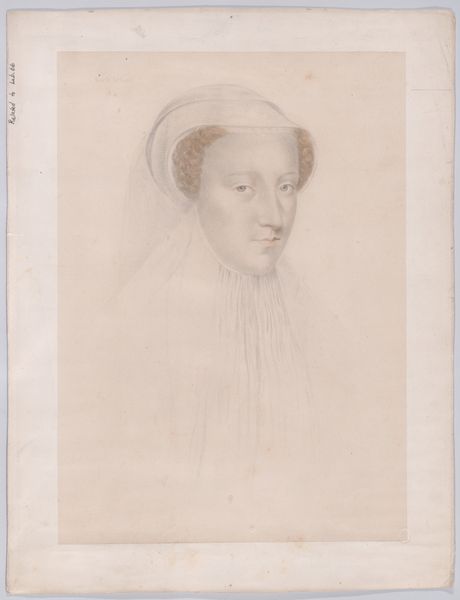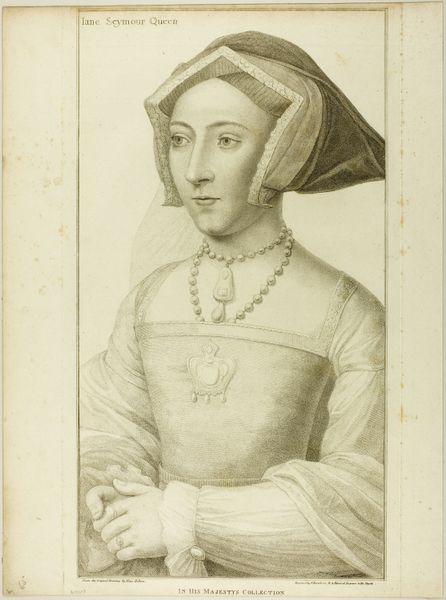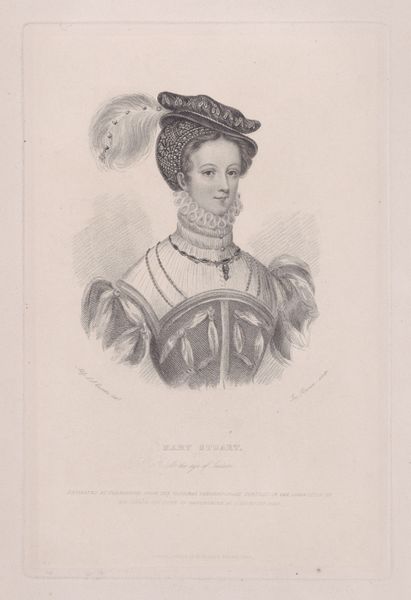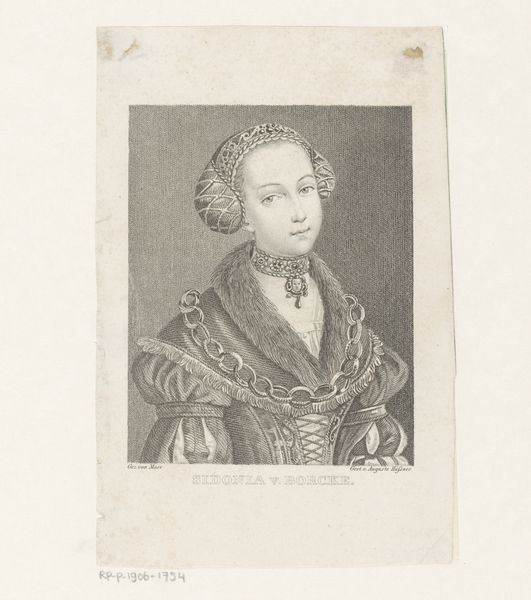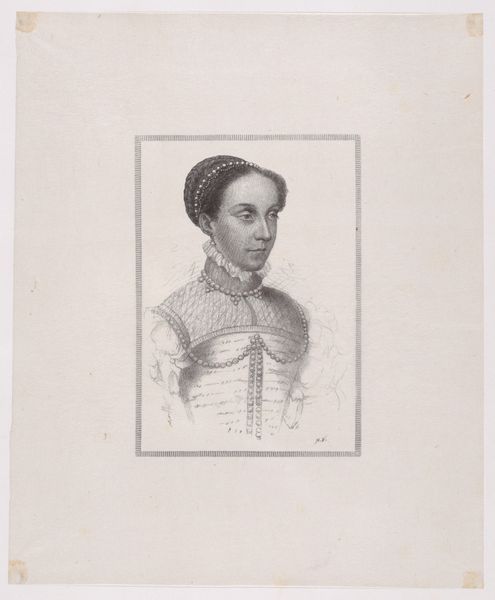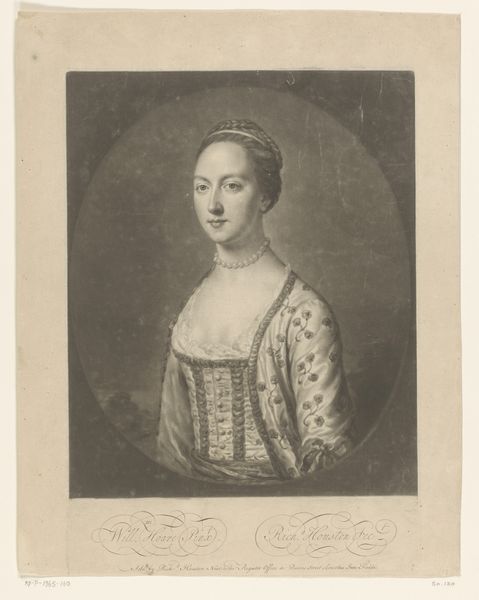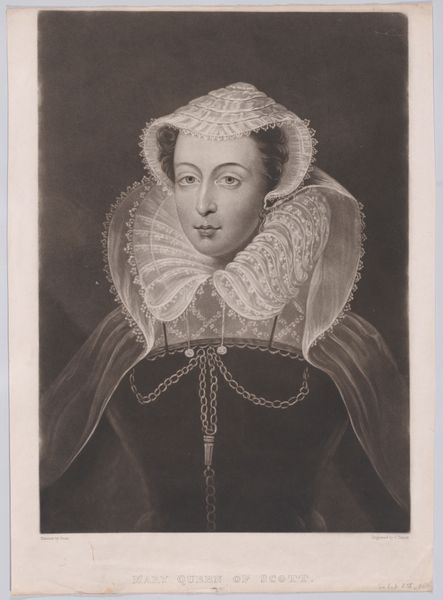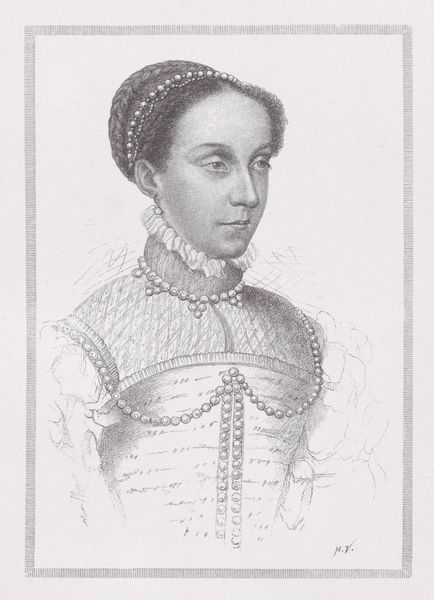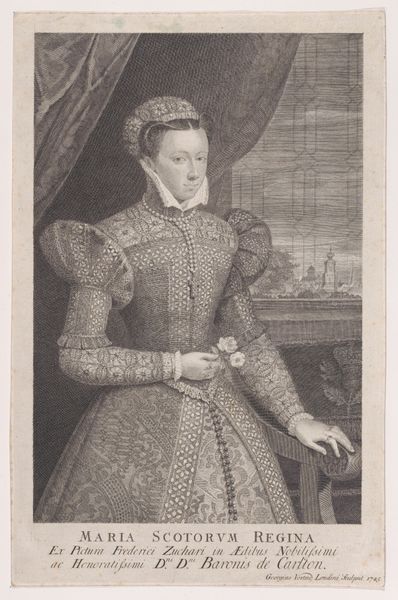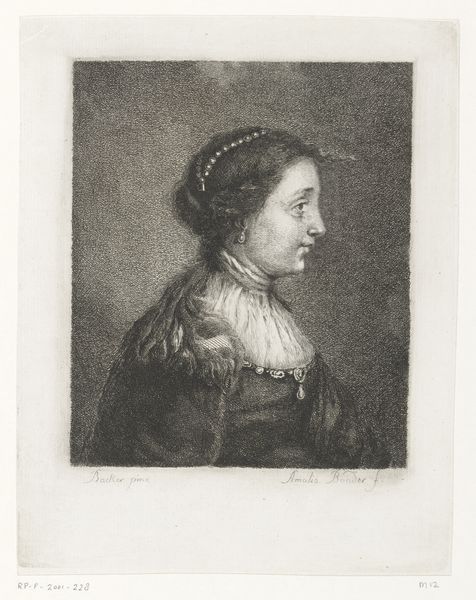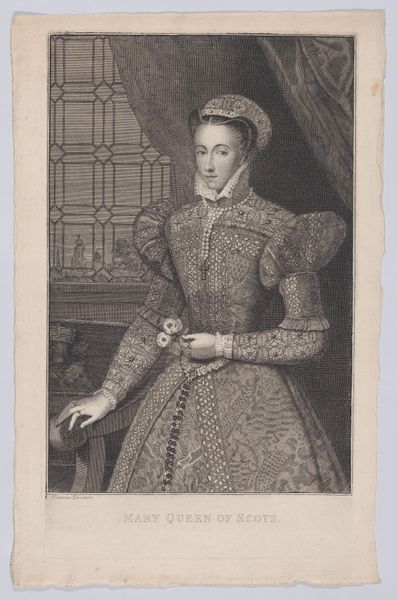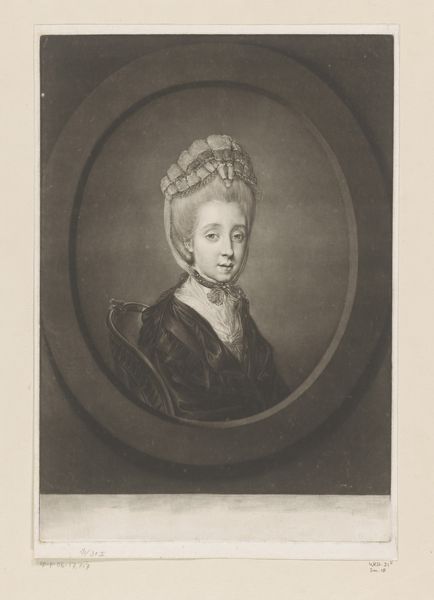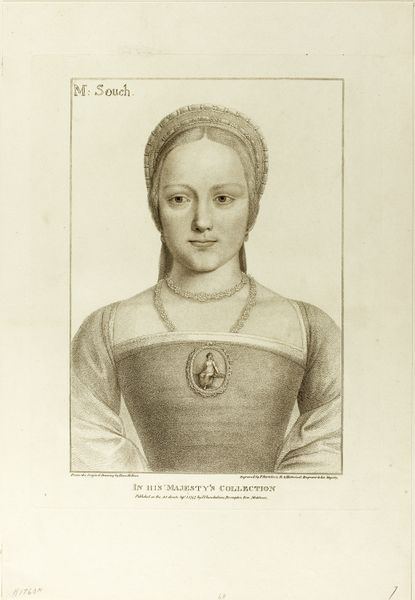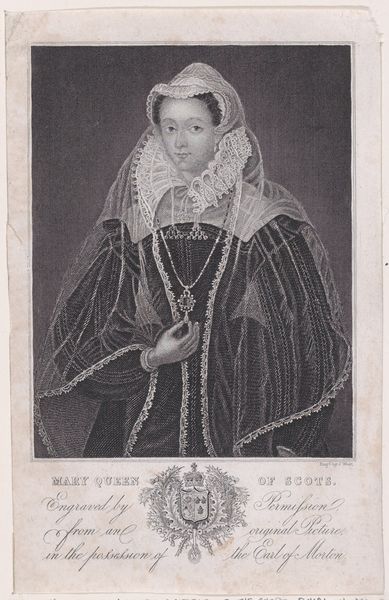
drawing, print, paper
#
portrait
#
drawing
# print
#
paper
#
romanticism
Dimensions: Plate: 16 1/8 × 11 13/16 in. (40.9 × 30 cm) Sheet: 16 1/8 × 12 5/8 in. (40.9 × 32 cm)
Copyright: Public Domain
Editor: This is Adolphe Pierre Riffaut's "Mary, Queen of Scots," a drawing printed on paper, made in 1828. It has a soft, almost ethereal quality, yet also feels quite formal. What can you tell me about the social context surrounding the creation of prints like this? Curator: I notice how the artist emphasizes the texture of the paper and the lines made by the printing process, even while depicting a Queen. What does this decision to display the means of production say about changing societal attitudes toward labor and craft in the 19th century? Are we meant to focus on the "artwork" or the "work" behind this artifact? Editor: That's a perspective I hadn't considered. I was so focused on the subject. Do you think the availability of printed images democratized art consumption in any way, allowing a wider audience to access images of royalty? Curator: Exactly. It's about shifting access and control. Prior to this, such images would have been restricted, objects of intense labor for singular elites. Prints changed that, connecting consumption to larger industries and networks. The material itself tells a story of changing social dynamics. How does understanding the reproductive process impact the viewer's engagement with the subject? Editor: I guess it forces you to question the aura of the subject, realizing the artist isn't working in isolation, but responding to materials, a production process and distribution mechanisms. Thank you. This has given me so much to think about. Curator: Likewise. It is important to consider the artistic decisions made during the fabrication process and their effect on the historical context of the artwork.
Comments
No comments
Be the first to comment and join the conversation on the ultimate creative platform.
